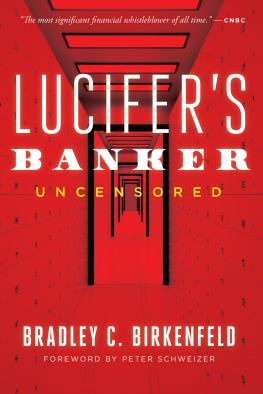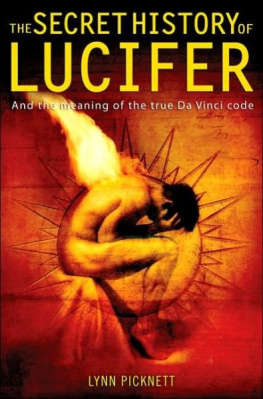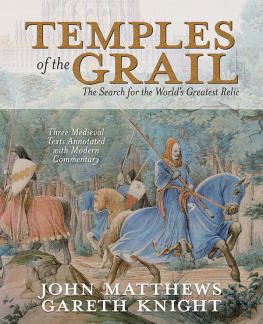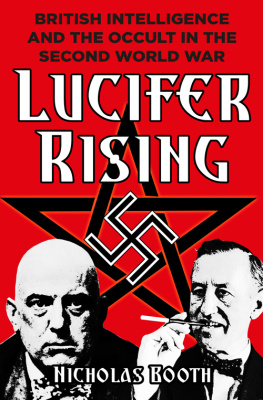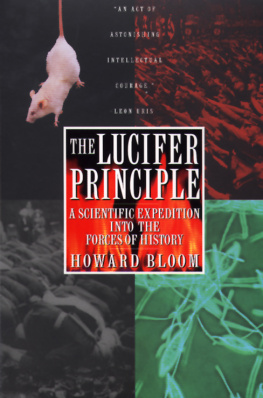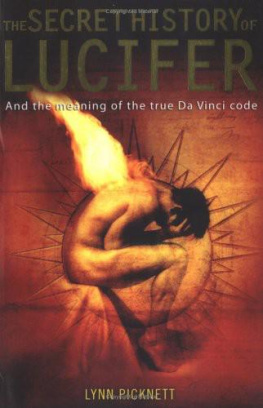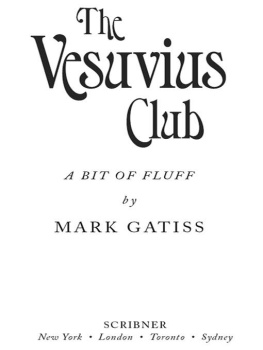LUCIFER'S
COURT
A HERETICS JOURNEY IN SEARCH of the Light Bringers

Otto Rahn
LUCIFER'S COURT
A heretics Journey in Search of the Light Bringers
Otto Rahn
Translated by Christopher Jones
Inner Traditions Rochester, Vermont
Inner Traditions
One Park Street
Rochester, Vermont 05767
www.InnerTraditions.com
Copyright 2004 by Verlag Zeitenwende
English translation copyright 2008 by Inner Traditions International
Originally published in German under the title Luzifers Hofgesind by
Schwarzhaupterverlag
First U.S. edition published in 2008 by Inner Traditions
All rights reserved. No part of this book may be reproduced or utilized in any form or by any means, electronic or mechanical, including photocopying, recording, or by any information storage and retrieval system, without permission in writing from the publisher.
Library of Congress Cataloging-in-Publication Data
Rahn, Otto, 1904-1939.
[Luzifers Hofgesind. English]
Lucifers court: a heretics journey in search of the light bringers I Otto Rahn ; translated by Christopher Jones.
p. cm.
Includes bibliographical references.
ISBN-13: 978-1-59477-197-2 (pbk.)
ISBN-10: 1-59477-197-9
1. Folklore. 2. Mythology. I. Title.
BL313.R2513 2008
201'.3094dc22
2007046262
Printed and bound in the United States by Lake Book Manufacturing
10 987654321
Text design and layout by Carol Ruzicka
This book was typeset in Sabon, with Charlemagne used as a display typeface.
ONTENTS
Verona | |
Meran | |
Bolzano Rose Garden | |
On the Freienbiihl above Brixen | |
Brixen | |
Gossensass | |
Geneva | |
On a Southern German Roadside | |
Worms | |
Michelstadt in the Odenwald | |
Amorsbriinn | |
Amorbach | |
PART THREE
With Relatives in Hesse | |
Mellnau in the Burgwald | |
Marburg am Lahn | |
Giessen | |
Siegen | |
Runkel am Lahn | |
Cologne | |
Heisterbach Monastery Ruins | |
Bonn | |
Asbach in the Westerwald | |
Goslar | |
Halberstadt | |
Berlin | |
Warnemimde-Gj edser | |
Edinburgh | |
In the Pentland Sea | |
In the North Atlantic | |
Reykjavik | |
Laugarvatn | |
Reykholt | |
Back Home | |
Bibliography | |
Do you know why I have so patiently translated Poe?
Because he resembled me. The first time I opened one of his books, I saw with terror and rapture subjects dreamed by me and described by him, twenty years earlier.
Charles Baudelaire
Translator's Foreword
Prolegomenon
I'i ie German philosopher Walter Benjamin held an almost mystical belief in the mission of the translator. In The Translators Task, he wrote that all books lose something when they are translated into another language; yet this loss is the price to be paid for a gain, because the translators task is to let the seed of pure language ripen in a translation.
Though the patron of all translators is St. Jerome (AD 347-420), the man who translated the Bible and other religious texts word for word, l he most celebrated literary translator of all remains the Roman statesman and orator Cicero (106-43 BC). As a translator of Greek texts into I .atin, he elaborated a theory that greatly influenced his successors: No longer was it necessary to give the reader the same number of words as in the original text. As an alternative method, he decided to give the same weight to words by privileging their sense, and so achieve a better adaptation. In this way, the real meaning of a work would survive the transformation of the text. As a rule, modern literary translators are instructed to become totally invisible in the texts they transform. Yet in the case of my translations of Otto Rahns Crusade Against the Grail and Lucifers Court, I was presented with the odd temptation to abandon my phantomlike anonymity and assume the authors identity a bit like wearing a devil mask in Carnival. The French Belle Epoque writer Raymond Roussel (dubbed the Black Sunsoleil noirby Andre Breton) was the first to describe this magical state, which became a trap for the central character in his first novel in verse, La doublure (The Understudy, 1897). Curiously, the word translation, which comes from the Latin verb traducere, actually means to to ferry across. Only after my initial passage word for word through Rahns text did I learn a second meaning for that word. In an odd coincidence, it denotes the Cathar belief that the spirit or soul is passed on to or reincarnated in a newborn after the death of anothera process that is known better as metempsychosis.
In the medieval world, so rich in spirituality and yet so meager in material pleasures, this traducianism could be avoided only through a spiritual baptism that the Cathars called the Consolamentum. According to the French scholar Jean Duvernoy, this would allow the spirit (or soul) to return to the heavens and resume its place in the firmament before its fall. In other words, this was a return to the morning star: Lucifer! In 1937, the recently established Schwarzhaupterverlag in Leipzig published Otto Rahns Lucifers Court, one of the most misunderstood and maligned books ever released. Although the author announced on several occasions that he intended to write the story of the German inquisitor Konrad von Marburg as a sequel to Crusade Against the Grail, Lucifers Court was his second and last published work before his suicide on the Wilderkaiser in March 1939.
In this book, structured as a travel journal, Rahn begins his quest for the Gral (Grail), a stone that supposedly fell to earth in the French Pyranees from Lucifers crown. As he traces the story of this symbol, Rahn discovers a brilliant wisdom of celestial origin that stands in opposition to Yahweh, the demiurge of the Old Testament and God of the Rnm Tcropl
Kahns pursuit of the Primordial Tradition takes him from the land ol I he Cathars to pagan Europes sacred spots: In Italy he discusses the legend of Tannhauser and uncovers King Laurins enchanted garden of roses, Der Rosengarten or Catinaccio in the Tyrol. At the Externsteine m Germany he recalls the legend of Irminsul, a holy ash tree that was venerated as the Tree of the World by the ancient Germans; and finally, in Iceland, he undertakes a pilgrimage to the birthplace of skald Snorri Sturlusson, the Nordic Homer who was the author of the Younger (I'rose) Edda.
According to Rahn, the roots of Catharism can be traced to the legends of the ancient Greeks, Goths, and Germanic pagans, all sworn enemies of the Roman Empire and its successor, the Catholic Church. I ike Rahn, they did not see Satan, Beelzebub, or the devil in Lucifer: In the Pyrenees, he was Abellio; among the Norsemen, he was Baldr; and the ancient Greeks celebrated him as Apollo. This Luciferianism, which is rooted in the esoteric literature of Hermeticism, sees Yahweh .is the manifestation of a satanic material realm, whereas Lucifer is the keeper of the highest spiritual ideals and has nothing at all to do with Satanism.





